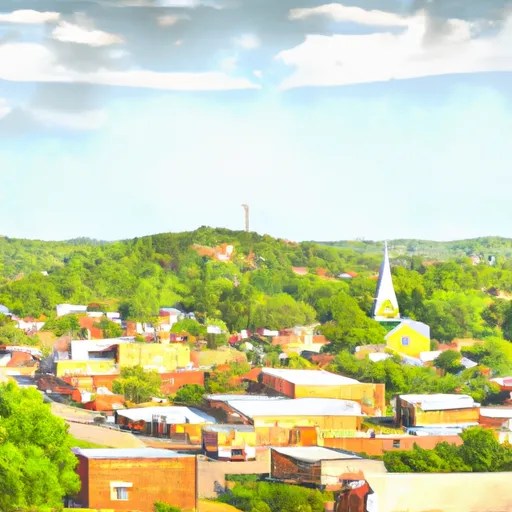-
 Snoflo Premium
Snoflo Premium
Get unlimited access to all our content
With no Ad interruptions! - Start Your Free Trial Login with existing account
Sage
Eden Index
Climate
8.1
•
Recreation
1.8
•
Community
1.6
•
Safeguard
4.3/10

Sage, Arkansas is a small town located in the central part of the state. It experiences a humid subtropical climate, characterized by hot summers and mild winters. The average high temperatures in the summer months range from the mid-80s to low 90s Fahrenheit, while winter temperatures average in the mid-40s to low 50s Fahrenheit. The area receives a moderate amount of rainfall throughout the year, with the wettest months usually being April and May.
Hydrologically, Sage is situated near the White River, providing access to various water activities such as fishing, boating, and kayaking. The river is known for its diverse fish population, including largemouth bass, crappie, and catfish, making it a popular spot for anglers. Additionally, there are several nearby lakes and reservoirs that offer opportunities for water-based recreation.
Outdoor enthusiasts visiting Sage can explore the surrounding natural beauty at nearby Ozark National Forest. The forest provides numerous hiking and camping opportunities, with scenic trails leading to waterfalls, overlooks, and breathtaking vistas. Wildlife enthusiasts can also enjoy birdwatching and spotting various species of animals that call the forest home.
Overall, Sage, Arkansas offers a pleasant climate, access to water activities, and ample opportunities for outdoor recreation, making it an appealing destination for nature lovers.
What is the Eden Index?
The Snoflo Eden Index serves as a comprehensive rating system for regions, evaluating their desirability through a holistic assessment of climate health, outdoor recreation opportunities, and natural disaster risk, acknowledging the profound impact of these factors on livability and well-being.
Climate Health Indicator (CHI): 8.1
Sage receives approximately
1208mm of rain per year,
with humidity levels near 81%
and air temperatures averaging around
15°C.
Sage has a plant hardyness factor of
7, meaning
plants and agriculture in this region tend to thrive during the non-winter months.
By considering the ideal temperature range, reliable water supplies, clean air, and stable seasonal rain or snowpacks, the Climate Health Indicator (CHI) underscores the significance of a healthy climate as the foundation for quality living.
A healthy climate is paramount for ensuring a high quality of life and livability in a region, fostering both physical well-being and environmental harmony. This can be characterized by ideal temperatures, reliable access to water supplies, clean air, and consistent seasonal rain or snowpacks.
Weather Forecast
Streamflow Conditions
Upper White
Area Rivers
Upper White
Snowpack Depths
Upper White
Reservoir Storage Capacity
Upper White
Groundwater Levels
Recreational Opportunity Index (ROI): 1.8
The Recreational Opportunity Index (ROI) recognizes the value of outdoor recreational options, such as parks, hiking trails, camping sites, and fishing spots, while acknowledging that climate plays a pivotal role in ensuring the comfort and consistency of these experiences.
Access to outdoor recreational opportunities, encompassing activities such as parks, hiking, camping, and fishing, is crucial for overall well-being, and the climate plays a pivotal role in enabling and enhancing these experiences, ensuring that individuals can engage in nature-based activities comfortably and consistently.
Camping Areas
Nearby Ski Areas
Catastrophe Safeguard Index (CSI):
The Catastrophe Safeguard Index (CSI) recognizes that natural disaster risk, encompassing floods, fires, hurricanes, and tornadoes, can drastically affect safety and the overall appeal of an area.
The level of natural disaster risk in a region significantly affects safety and the overall livability, with climate change amplifying these risks by potentially increasing the frequency and intensity of events like floods, fires, hurricanes, and tornadoes, thereby posing substantial challenges to community resilience and well-being.
Community Resilience Indicator (CRI): 1.6
The Community Resilience Indicator (CRI) recognizes that education, healthcare, and socioeconomics are crucial to the well-being of a region. The CRI acknowledges the profound impact of these elements on residents' overall quality of life. By evaluating educational resources, healthcare accessibility, and economic inclusivity, the index captures the essential aspects that contribute to a thriving community, fostering resident satisfaction, equity, and social cohesion.

